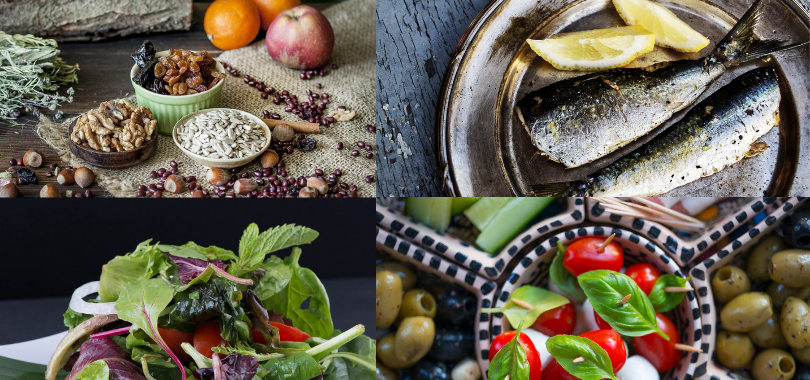The Purpose Of The Microbiome Restore
Many inflammatory health conditions can be linked to compromised microbiome and poor gut health. There is now good research and evidence to show the importance of microbiome restore.
Within these poor health states, there is often an overgrowth of “bad” bacteria within your gut. This is a crucial part of treatment for these ailments to restore the microbiome and replenish the “good” bacteria. Ressearch has also linked poor gut health to many mental health conditions.
There are many things that impact the microbiome. Refined food commonly found in the typical Western diet, stress, alcohol, drugs, medications, hormones and many other things fosters the growth of this “bad” bacteria, causing inflammation and what we know as ‘dysbiosis’.
Dr Orr’s Microbiome Restore Protocol aims to reduce the intake of these refined foods and others things that impact the microbiome, and and instead foster the growth of “good” bacteria.
The Eating Plan
This eating plan is based on Dr Andrew Orr’s Primal Ancestral Clean Eating (PACE) diet. It does allow quite a range of foods, so you shouldn’t have any trouble eating at home, or out anywhere. It is important to note that this is not a “diet.” This is simply the way we are supposed to eat.
2 Phase Microbiome Restore Protocol
Prior to starting the microbiome restore will also need to complete some health questionnaires and have a half hour consultation with Dr Andrew. The health questionnaire need to be fully completed and sent back prior to your consultation. All the relevant information will be supplied to you when you enquire, or book your consultation.
Alongside the PACE diet, this Microbiome Restore Protocol also involves supplementation that is set out in two phases. Both phases need to be completed in order to achieve working results.
Please note that the supplements prescribed as part of the microbiome restore protocol are practitioner only prescribed supplements which will require a consultation before they can be prescribed.
Phase 1 – Removal of Bad Bacteria & Gut Lining Repair
The first phase aims to restore the gut lining, remove bad bacteria and microbials, and create an environment in which good bacteria can thrive. Phase 1 will not need to be repeated (unless you wish you repeat the process in the future). It lasts for approximately 4 weeks, or until all of the products are finished. After that, you move on to phase 2 which then is also the maintenance phase.
Phase 2 – Replenishing the Microbiome & Good Gut Bacteria
After removing the bad bacteria, repairing the gut lining, and laying down a foundation for the good bacteria to grow, you will need to recolonise your gut with good bacteria. Strain specific bacteria are used and it will depending on the individual which probiotic strains are used.
Phase 2 aims to replenish the good gut bacteria through the use of Pre and Probiotics. This phase will be ongoing and used as maintenance for your condition. It is extremely important to continue your intake of Pre and Probiotics to ensure proper colonisation of good bacteria and restore on the microbiome.
Important Things To Note
It is important to note that the results of doing the microbiome restore could take months to come into effect and for there to be adequate good bacteria colonisation. It is likely that if you have been recommended to take part in this protocol, that your microbiome is quite compromised due to years of consistent damage. Because of this, it will likely take quite a while to properly restore the microbiome back to equilibrium. This is done by way of continuing with your prebiotics and strain specific healthy bacteria, to get back on track and eventually feel healthier.
As mentioned previously, many things can impact gut bacteria including stress, alcohol, diet, etc. so it is important to be mindful of this and what you expose your body to on your pathway to recovery.
A good way to think of a damaged microbiome is like any other damaged organ or bone in the body. A broken bone, torn ligament, or damaged internal organ is not likely to heal overnight. It can take months or even years of recovery, rehabilitation or medicinal therapies to get on top of it. The same applies for your digestive tract. It is no exception to the rule in regards to healing time within your body. The best results come when people are consistent in sticking to their treatment plan, and are realistic about time frames and outcomes.
Next Step Is Book Your Consultation
If you need help with restoring your microbiome for better health, then please give my clinic staff a call and find out how my Microbiome Restore Protocol may be able to assist you on the pathway to better health. There are options for online, or in person consultations. Conditions may apply to online consultations.
For further information please call +61 07 38328369, or email info@drandreworr.com.au
References
-
Walker A, et al. Phylogeny, culturing, and metagenomics of the human gut microbiota. Trends Microbiol. 2014;22:267–74.
-
Collado MC, et al. Role of commercial probiotic strains against human pathogen adhesion to intestinal mucus. Lett Appl Microbiol. 2007;45(4):454-60.
-
Leahy SC, et al. Getting better with bifidobacteria. J Appl Microbiol. 2005;98(6):1303-15.
-
McFarland LV. Systematic review and meta-analysis of Saccharomyces boulardii in adult patients. World J Gastroenterol. 2010;16(18):2202-22.
-
Jahn HU, et al. Immunological and trophical effects of Saccharomyces boulardii on the small intestine in healthy human volunteers. Digestion. 1996;57(2):95-104.
-
Jahn HU, et al. Immunological and trophical effects of Saccharomyces boulardii on the small intestine in healthy human volunteers. Digestion. 1996;57(2):95-104.
-
Dahan S, et al. Saccharomyces boulardii interferes with enterohemorrhagic Escherichia coli induced signaling pathways in T84 cells. Infect Immun. 2003;71:766-773.
-
Hsieh H. Versalovic J. The human microbiome and probiotics: Implications for pediatrics. Curr Probl Pediatr Adolesc Health Care. 2008;38(10):309–327.
-
Lam EK, et al. Enhancement of gastric mucosal integrity by Lactobacillus rhamnosus GG. Life Sci. 2007;80(23):2128-36.
-
Seth A, et al. Probiotics ameliorate the hydrogen peroxide-induced epithelial barrier disruption by a PKC- and MAP kinase-dependent mechanism. Am J Physiol Gastrointest Liver Physiol. 2008;294(4):G1060-9.
-
Gibson GR. Roberford M. Dietary modulation of the human colonic microbiota: introducing the concept of prebiotics. J Nutr. 1995;125:1401-1412.
-
Fastinger ND, et al. A novel resistant maltodextrin alters gastrointestinal tolerance factors, fecal characteristics, and fecal microbiota in healthy adult humans. J Am Coll Nutr. 2008;27(2):356-66.
-
Raninen K, et al. Dietary fiber type reflects physiological functionality: comparison of grain fiber, inulin, and polydextrose. Nutr Rev. 2011;69(1):9-21.
-
Robison LE. Reeves S. EpiCor® and its immune effects on gut health. Embria Health Sciences, LLC. [Online]. No date. Available from: http://www.embriahealth.com/upload/pdf/EpiCor%20Science%20%20EpiCor%20and%20its%20Immune%20Effects%20on%20Gut%20Health_FINAL.pdf [Cited 16/02/13].
-
Jensen GS, et al. Antioxidant bioavailability and rapid immune-modulating effects after consumption of a single acute dose of a high-metabolite yeast immunogen: results of a placebo-controlled double-blinded crossover pilot study. J Med Food. 2011 Sep;14(9):1002-10.
-
Bartoli, C., Frachon, L., Barret, M., Huard-Chauveau, C., Mayjonade, B., Zanchetta, C., … & Roux, F. (2018, May 30). In situ relationships between microbiota and potential pathobiota in Arabidopsis thaliana. The ISME Journal. Retrieved from https://www.nature.com/articles/s41396-018-0152-7#article-info
-
Berg, R. D. (1996). The indigenous gastrointestinal microflora. Trends in Microbiology, 4(11), 430-435. Retrieved from https://www.sciencedirect.com/science/article/pii/0966842X96100573
-
Carpenter, S. (2012, September). That gut feeling. Monitor on Psychology, 43(8), 50. Retrieved from http://www.apa.org/monitor/2012/09/gut-feeling.aspx
-
Clapp, M., Aurora, N., Herrera, L., Bhatia, M., Wilen, E., & Wakefield, S. (2017, September 15). Gut microbiota’s effect on mental health: The gut-brain axis. Clinics and Practice, 7(4), 987. Retrieved from https://www.ncbi.nlm.nih.gov/pmc/articles/PMC5641835/
-
NIH Human Microbiome Project. (n.d.). Retrieved from https://hmpdacc.org/
-
Shepherd, E. S., DeLoache, W. C., Pruss, K. M., Whitaker, W. R., & Sonnenburg, J. L. (2018, May 9). An exclusive metabolic niche enables strain engraftment in the gut microbiota [abstract]. Nature, 557, 434-438. Retrieved from https://www.nature.com/articles/s41586-018-0092-4
-
The Human Microbiome Project Consortium. (2012, 14 June). Structure, function and diversity of the healthy human microbiome. Nature, 486, 207-214. Retrieved from https://www.nature.com/articles/nature11234
-
Ursell, L. K., Metcalf, L., K., Wegener Parfry, L., Knight, R. (2012, August). Defining the human microbiome. Nutrition Reviews, 70(Suppl 1), S38-S44. Retrieved from https://www.ncbi.nlm.nih.gov/pmc/articles/PMC3426293/






